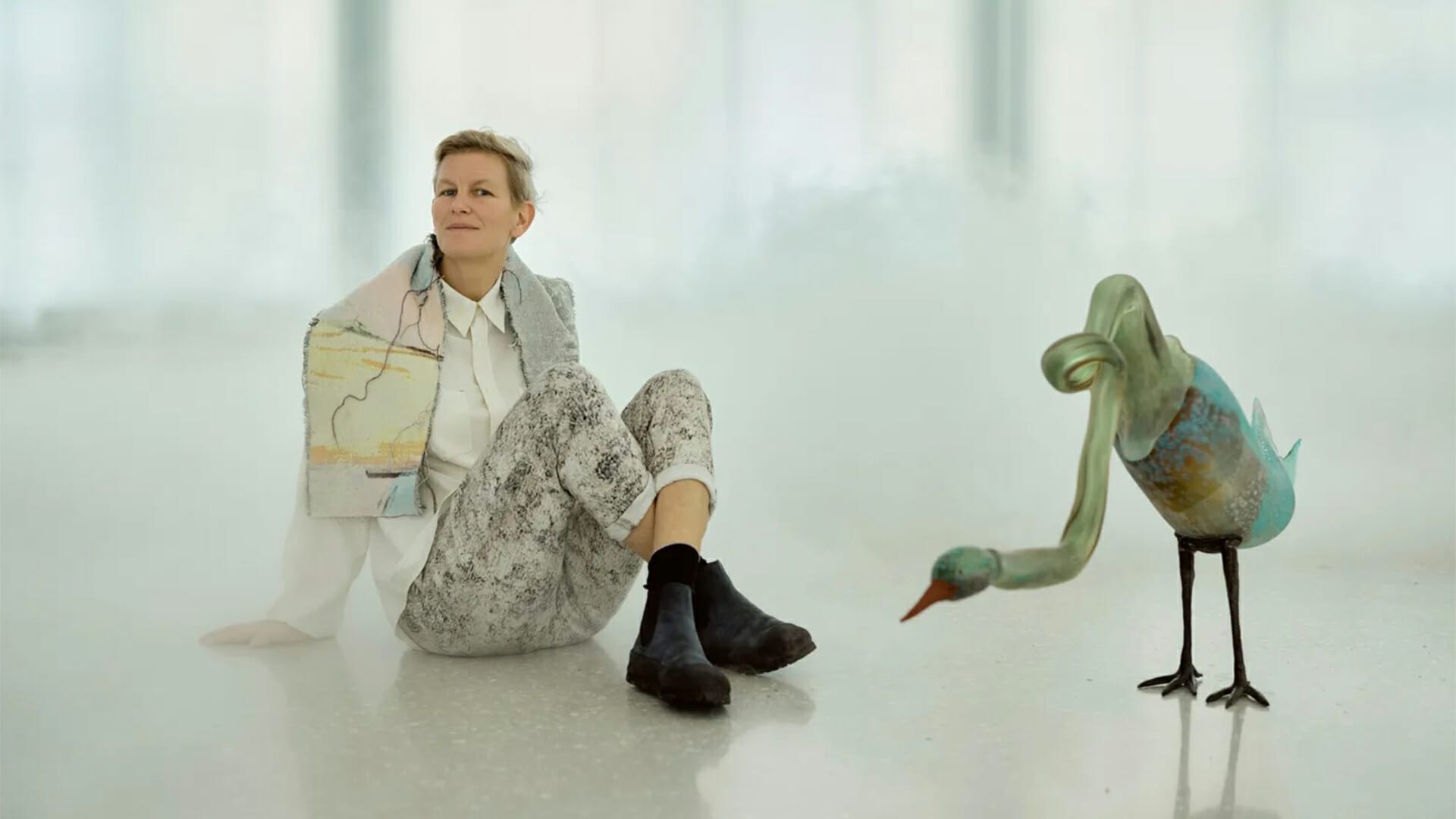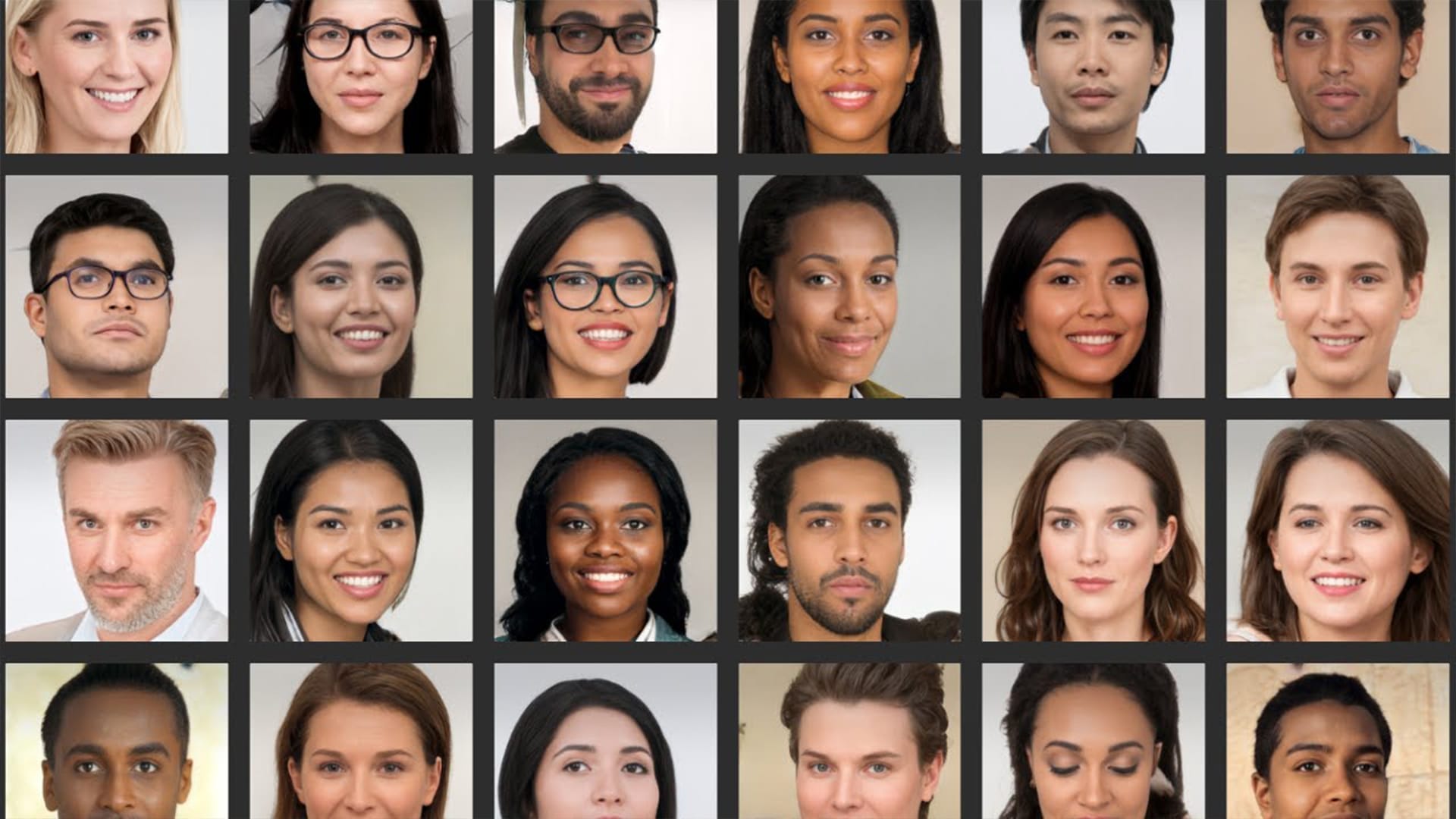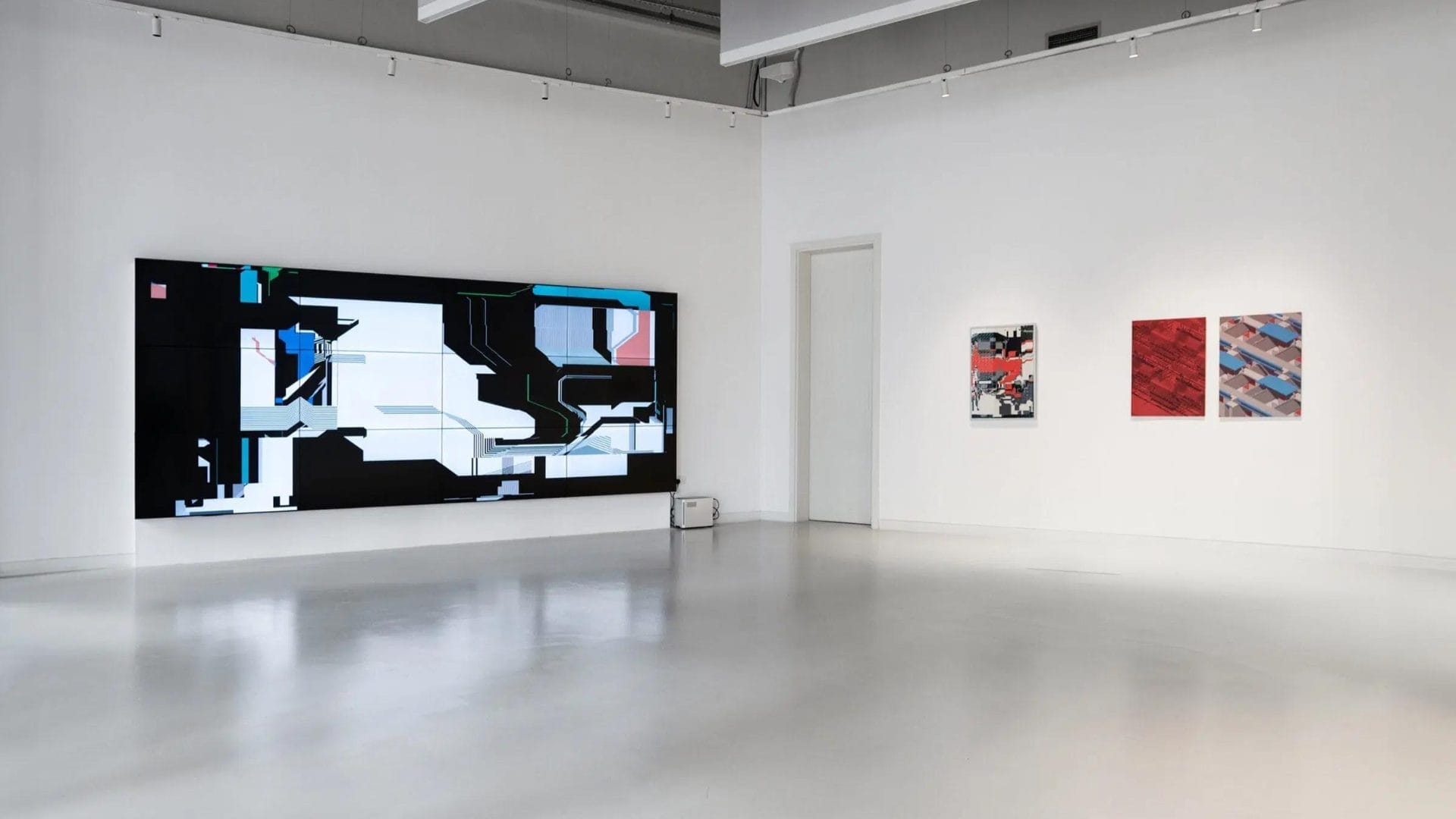
Fakewhale Presents AGH1: An AGH Collective Exhibition
How does the digital transformation of our environment mirror the evolution of our own existence? And in what ways do our encounters with digital art reshape our perceptions of the tangible and the intangible?
Set against the backdrop of Art Dubai 2024, from February 16th to March 24th, Fakewhale proudly presents AGH1 Dubai by Kim Asendorf, Andreas Gysin, and Leander Herzog at Gallery 4 at Foundry, curated by Giuseppe Moscatello; an exhibition supported by Valuart and PRNTD.
AGH1 Dubai, evolving from its debut in Berlin last December, transcends the norms of conventional architectural design and digital practices with its abstract, real-time animations.
Unlike other exhibitions, this installation offers viewers the opportunity to connect directly and fully with the art, without being mediated by any overarching conceptual frameworks or hidden messages.

Foundations in Berlin: The Genesis of AGH1
Despite the differences in formal and technical approaches, the attitude toward the work is very similar: the trio’s projects are independent and do not have a conceptual or hidden narrative; everything is open to the viewer.
It is this precise unity in perspective and shared commitment to exploring the intrinsic properties of digital media that led the AGH collective – Andreas Gysin, Kim Asendorf, and Leander Herzog – to work together for the very first time on the AGH project, which premiered at the Funkhaus in Berlin on December 7th, 2023, supported by Fingerprints Studio.
The choice of venue for their exhibition, Funkhaus Berlin, significantly complemented their artistic approach. Built between 1951 and 1956 by renowned architect Franz Ehrlich, the Funkhaus is emblematic of the Bauhaus movement’s synthesis of art, design, and technology—a principle that resonates with the core of AGH1’s philosophy. Its architectural prominence, with a facade melding glass and steel and a central hall designed for acoustical excellence, historically anchored it as the heart of East German broadcasting. Today, it represents a nexus for cultural and creative industries, preserving a legacy of technological and cultural amalgamation that contextually enriched the AGH project, as it contextualized it within a multi-layered narrative that bridges the past and present.
Within this setting, the exhibition featured unique pieces from each artist presented on a single LED wall: “Alternate” by Asendorf, “Crush” by Gysin, and “Heatsink” by Herzog, offering attendees a direct experience into the world of digital art and its interaction with architectural design.
The conceptual framework of the project enabled this experience, which emphasized the computer not merely as a tool, but as the central subject of artistic exploration. As a matter of fact, one of the key elements of the trio’s approach consists of glorifying digital technology, not through narrative overlays, but rather by showcasing its inherent properties; a method that elevates the raw, unprocessed aspects of digital art, presenting it in an unfiltered, transparent way.
Further reflecting on this artistic methodology, AGH1’s creations are marked by their kinetic and multi-dimensional essence, where spontaneity and fluidity challenge the static conventions of traditional art forms, highlighting the expansive potential of digital mediums to breach conventional artistic norms. Such dynamism not only captivates the viewer but also invites them into a dialogue with the art.
Not to mention how the adaptability and flexibility of their works, designed for an array of digital platforms, underline the ephemeral nature of digital art — an adaptability that reshapes the traditional viewer-artwork dynamic, emphasizing that the mode of display is not merely a backdrop but an integral component of the artistic dialogue.

AGH1 Dubai: A New Conceptual Evolution
Building on the conceptual groundwork established by the AGH1 exhibition in Berlin, AGH1 Dubai marks a significant evolution in the collaborative journey undertaken by Kim Asendorf, Andreas Gysin, and Leander Herzog — a progression, that is not merely geographical but conceptual, deepening the exploration of the connections between generative art, architectural coding, and the celebration of computing power.
On occasion of Art Dubai 2024, from February 16th to March 24th at Gallery 4 at Foundry, presented by Fakewhale with the support of Valuart and PRNTD, AGH1 Dubai is set to take part in this special event’s futuristic sensibility and once again showcase the project’s intrinsic alignment with technological advancement and artistic innovation.
At the heart of AGH1 lies a celebration of the computer as both muse and medium, transcending its conventional role through the lens of generative art.
The project’s essence, first revealed in Berlin, introduces audiences to novel abstract, real-time animations that transition from simplicity to complexity, which isn’t just a visual transformation but an intentional artistic undertaking, mirrored by the discipline of concrete art, which emphasizes the purity of color and form.
In their compositions, Asendorf, Gysin, and Herzog employ algorithmic precision to create symmetrical compositions that are reminiscent of their concrete art predecessors, such as Max Bill and Theo van Doesburg.
By combining generative art and architectural coding, the project once again glorifies the computer, but this time with a variation of the inaugural edition, as abstract, real-time animations create a self-generating aesthetic that challenges conventional architectural design norms and digital practices. Intricate geometrical shapes and color depths emerge over time and space in these animations, which begin as simple compositions; as the digital canvas evolves, each pixel represents a deliberate act of artistic choice, reflecting the concrete artists’ commitment to pure color and form and embodying principles of dynamic and generative architecture.
The result is that AGH1’s works, constantly changing and devoid of any defined narrative, portray reality in its purest form through the dialogue between hardware and software, ultimately serving as a metaphor for societal progress and innovation, while simultaneously enabling viewers to interpret the work in ever-new ways. With their exhibitions, AGH1 moves away from traditional exhibition methods toward a dynamic and algorithm-driven approach that ensures art remains impactful even when not interacted with directly.
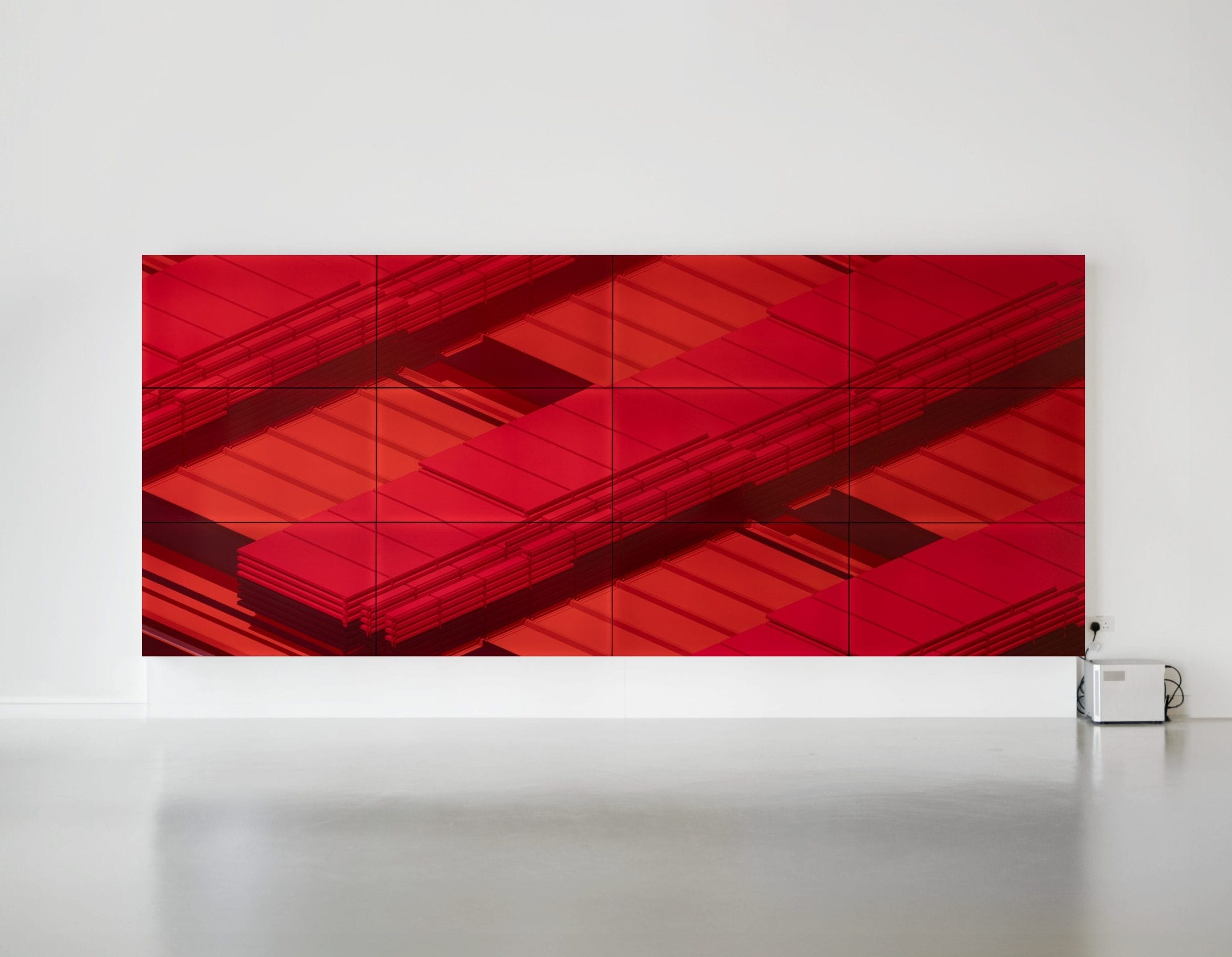
During a conversation about AGH1 Dubai, Leander Herzog shared his personal perspective on the project, “I’m trying to design a “viewing experience” on three levels of time – considering the unpredictable state of the art, and the variable attention span of the audience. The first one is just the image one sees when scrolling or walking by. This is very quick, so the art becomes a static image by definition. But it’s also the important entry point for any experience; most people see the art as such, this is how it starts. This is not to say that making a quick first impression with a static would be simple or less challenging to begin with.
A next level of time is between seconds and minutes. The audience that stops scrolling and engages with the art. Either by following a link to look at the original work on a device, or by sitting down in front of the work in an exhibition space. This is when animation becomes more significant and the work elevates from a static composition to a dynamic, moving system. Rhythm, change and variation come to the foreground.
Beyond that there is a third situation. The work as a longer experience, between minutes and hours, maybe over longer periods of time. That’s for friends, fellow artists, collectors and visitors that come back multiple times. It’s close to the previous one, but comes with more depth and variation. This is where very unique and rare compositions can be observed, in the context of understanding the overall parameter space through observation and exploration. This is for the collector that clicks around on a work during a call. The friend that runs the work on a screen at home and walks by many times per day. Or just me, coming back to it years after it has been released and accepted for what it is.
All three temporal layers are essential to consider and reveal a different aspect of the work to the viewer. Thanks to the internet, a lot of people see the work for just fractions of a second, for better or worse. But some really watch it change and evolve for many hours, during one day or over the years. The challenge is to design and test this spectrum of variation in a parameter space, in less time than it takes to actually see it.
The experience is unpredictable as a function of its potential to always keep changing. Which is as challenging as it is beautiful and a big part of the nature of this type of work. One can never truly know all its states, just get a feel for the surface area of possibility. And then there is still the danger and hope for something unseen to emerge. Something that has not been there before and won’t ever be reproduced again.”
Complementing the installation, a series of physical prints powered by PRNTD linked to the main project bridges the gap between the digital and physical realms, offering a tangible connection to the generative art processes, while underscoring the fluidity between the digital and physical worlds and enriching the viewer’s experience.

AGH1 Dubai: A Microcosm of Digital and Physical Convergence
Around AGH1 Dubai lies an invitation to reconceptualize our understanding of reality in the digital age—a time when the virtual and the physical increasingly intertwine to form a new, hybrid space of existence.
The exhibition serves as a metaphor for the human condition in the 21st century, prompting us to think about more than just how we experience art, but also how we navigate in a world where digital constructs and physical reality are entwined so deeply that they begin to mirror one another.
What if we view AGH1 Dubai not merely as an exhibition but as a living organism within the ecosystem of human culture? Just as a living organism adapts to its environment, the dynamic and unpredictable nature of the artworks on display reflects our own adaptation to the digital environment that envelops us. In this perspective, the exhibition could be viewed as a microcosm of society’s larger digital transformation, where digital art’s fluidity and adaptability mirror our own evolution.
From this perspective, AGH1 Dubai challenges the viewer to reflect on the future of both art and human identity in a world where physical and digital dimensions become indistinguishable. In its exploration of digital media as not just tools, but as central to artistic expression, the exhibition mirrors our own journey to integrating digital technology into everyday life. Every work becomes a reflection of our own existence, constantly in motion, evolving in response to our ever-changing connections and interpretations.
Implicitly, it suggests that the future of art—and perhaps of humanity itself—lies not in a choice between the digital and the physical, but in the embrace of their convergence.
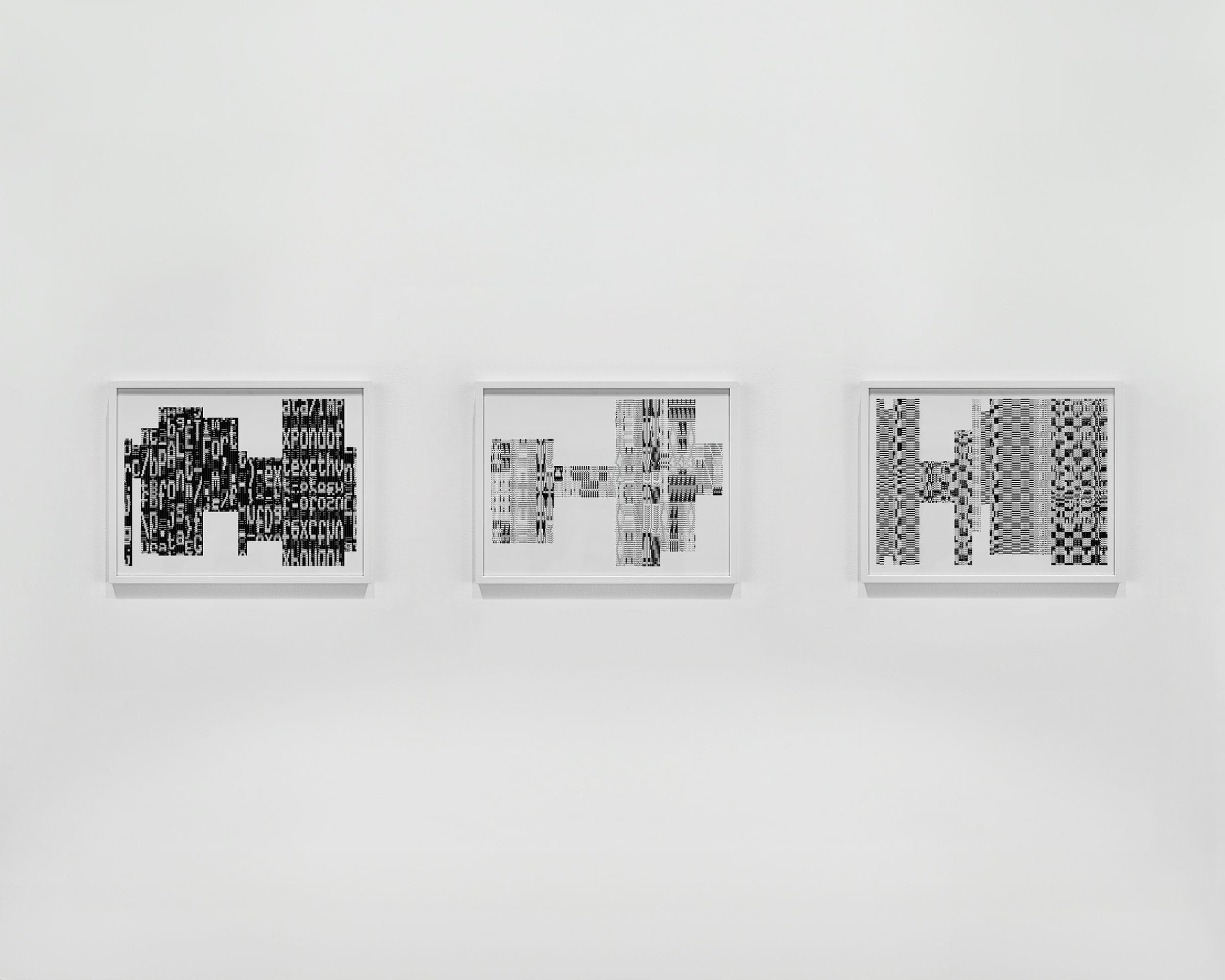
fakewhale
Founded in 2021, Fakewhale advocates the digital art market's evolution. Viewing NFT technology as a container for art, and leveraging the expansive scope of digital culture, Fakewhale strives to shape a new ecosystem in which art and technology become the starting point, rather than the final destination.
You may also like
Laure Prouvost: An Odyssey Through the Concrete and the Illusory
Laure Prouvost is renowned for her multidisciplinary body of work, which spans an array of media—
Fakewhale in dialogue with Tim Plamper
For some time, we have been following Tim Plamper’s work, fascinated by his ability to blend diffe
Can NFTs Ultimately Save Us from Deepfakes?
In an era of digital manipulation, the demarcation between the authentic and the fabricated becomes

